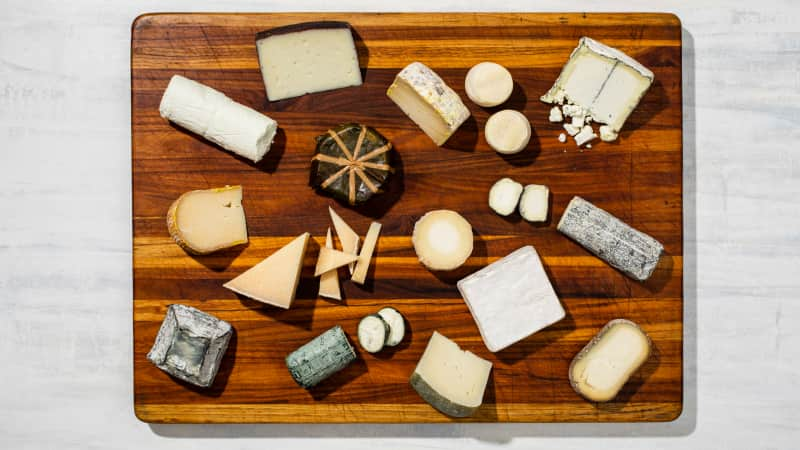Blue Cheese
Taste Test
Fresh chèvre often overshadows other styles of cheese made with goat’s milk. From France’s Valençay to Vermont’s Bijou, here are 15 cheeses you should know.
Published Apr. 15, 2021. Appears in America's Test Kitchen TV Season 23: Grilled Short Ribs and Vegetable Casserole

You can make a lovely, eclectic cheese plate using only goat cheese. That’s how much this category of cheese varies. Logs of fresh chèvre are lemony and spreadable. Some styles of goat cheese age for several months and are much firmer and quite complex, the natural sweetness of the milk turned nutty and caramelly in flavor. And plenty of other goat cheeses, having aged just a week or two, exhibit a combination of textures. Their dry, crumbly centers are surrounded by delightfully gooey and delicate exteriors.
If the range of flavors and textures in goat cheeses comes as a surprise to you, you’re in excellent company. When I worked as a cheesemonger, many shoppers assumed that fresh chèvre was the only goat cheese around. Back then, I would cut samples from a few different goat cheeses and hand them over the counter. Now I have the opportunity to write about them. The goal is the same: to celebrate a broad category of cheese and help people find something they love. With input from experts, I put together a list of 15 goat cheeses. Nine are produced in the United States and six are made abroad. Some have been made for centuries, and two were introduced within the past few years. Two are fresh chèvres, while the rest have been aged for a period of several days or even several months. Each of these goat cheeses is excellent, and together they showcase the range of goat’s-milk cheeses available.
As with all cheese, the quality of the milk used to make it is of utmost importance. Among other things, it’s influenced by the breed of goat, the goats’ diets, and the time of year. Goat’s milk is also unique in color and composition. Due to how the animals process the orange-hued plant pigment beta-carotene, their milk is a brighter white than cow’s or sheep’s milk. The protein casein is distributed differently than in other milks, which may explain why some people with allergies to casein find goat’s milk easier to digest. Both things are also true of cheeses made with goat’s milk.
The milk used for most of the goat cheeses produced in the United States is pasteurized. (The U.S. Food and Drug Administration prohibits the sale of raw-milk cheese younger than 60 days, and few American goat cheeses are aged that long.) In France, where young raw-milk cheeses are common, cheesemakers often make pasteurized versions of their cheeses specifically for export. Valençay and Sainte-Maure de Touraine are two centuries-old French raw-milk cheeses that are available only in pasteurized form in the United States.
Whether the milk is raw or pasteurized, there are two main ways to tu...
The mission of America’s Test Kitchen Reviews is to find the best equipment and ingredients for the home cook through rigorous, hands-on testing.

Kate is a deputy editor for ATK Reviews. She's a culinary school graduate and former line cook and cheesemonger.

This is a members' feature.